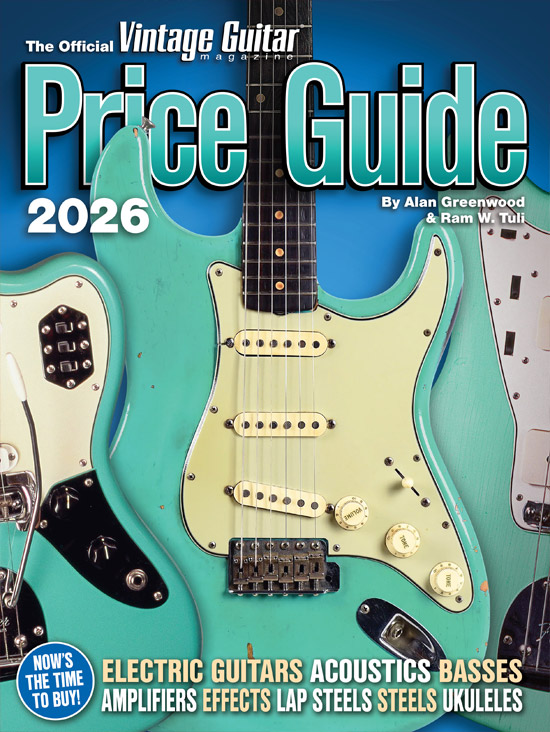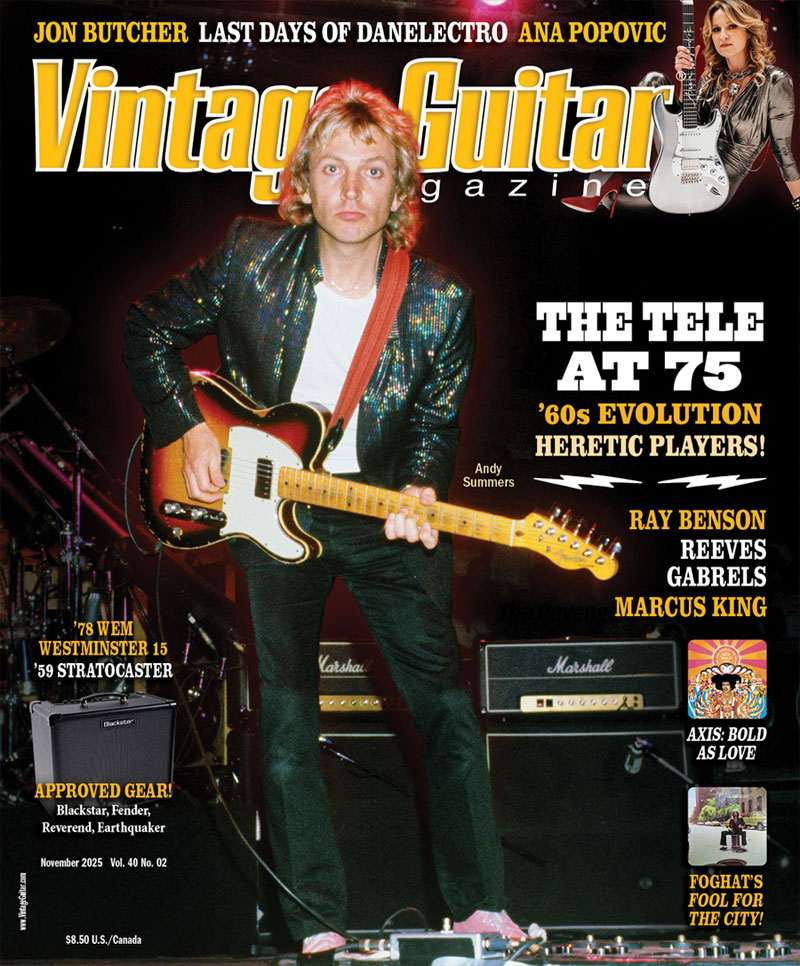Andy Wood is the living embodiment of the modern working guitarist. Straddling the galaxies of country music and shred, he has a savvy online presence that includes guitar instruction, live workshops, and touring. After going toe-to-toe onstage with Brent Mason and Steve Morse, he should receive the Guitar Congressional Medal of Honor for bravery. But more importantly, his latest album, Charisma, shows the range of his musical prowess while featuring celebrity guests.
What’s the story behind Charisma?
This one hit me in an odd place in life. I was on the road touring so hard. Then all of a sudden, Covid happened. We were all locked up with nothing to do. Then, I started working with the online community and Patreon. That spiraled into teaching. I’d get a melody in my head and jot it down. Also, within 13 months, I lost my father and my grandfather. My grandfather got me started playing music. So, I had all that bottled up. I’m not good with expressing emotions verbally, so making this album was very therapeutic in putting those feelings somewhere. I had 53 demos (laughs)!
Through my guitar retreat, Woodshed Guitar Experience, I became friends with people like Joe Bonamassa, who played a solo on the record. I felt comfortable with that because my career was at a point where I wasn’t trying to hitch my career to their wagon; I felt like I had my own voice. So, instead of, “Hey, will you play on my record to prove that I’m good?,” it’s like I’m inviting a friend over for a beer (laughs). I didn’t feel like I needed to do that for validation. It was fun just to say, “Hey, let’s hang out.”
The emotion on Charisma really shines through.
I didn’t feel like I was choosing the song with the flashiest guitar playing. I wasn’t trying to impress anyone. Charisma is about melody and song, first. On Youtube, there’s an arms race of guitar players. Everybody has unbelievable chops. If everybody’s good, now what? Which leads you back to what it all should be about in the first place, which is “What’s a good song?” Write me a song! Play me a song! I was yelling this to myself in the mirror (laughs). I tell my Patreon community, “If you could have the Infinity Gauntlet of music and Thanos could give you all the stones for all the musical ability in the world, what would you choose to play?”
The most-important thing is finding your own voice as a musician. Nobody needs to play fast for the 5,000th time (laughs). That’s where “Shoot The Sun Down,” “Copperhead,” and “Cherry Blossoms” comes from. The melodies are what matters. Even on “Free Range Chicken,” the chorus is straight out of Leslie West and Mountain-inspired Southern rock. It’s got to serve a greater purpose than impress other guitar players.
On “Moaning Lisa,” you and Bonamassa show genuine musical chemistry.
He played such a cool and vibey Strat into a cranked Twin solo. It’s important to have your own identity. On “Free Range Chicken,” with Brent Mason, I could have used the back pickup and did clean chicken pickin’. But why bring sand to the beach? It’s cooler when people have their own personalities. What made G3 so special was Satch, Petrucci, Vai, Morse, Paul Gilbert, and Eric Johnson did not sound like each other. That’s what’s so special about tube amps and that era of the guitar versus the modern era, where everyone uses the same plug-ins. There’s not a lot of sonic identity today.
What is your recording philosophy?
I always start with the guitar unplugged. If the guitar doesn’t sound good in your lap, an amplifier is just going to make that louder (laughs). From there, it’s recording the main riff with different combinations of amps – I’ll try a Bogner, a Suhr, or a vintage Deluxe. I’m lucky enough to own one of Eric Johnson’s old Marshalls. There’s no right answer the same way every time. My flavor for lead tones is the Eric Johnson/Andy Timmons-inspired fat and dark vocal-sounding lead tone. The guitar is the lead singer. For rhythm tones, I think the common mistake is too much gain, too much compression, and too much low-end. When you have all that going on at the same time, it turns into a wall of nothing.
Which guitars did you use?
I used my Suhr Modern T signature model most of the time, as well as a Suhr Classic.
What’s next?
I’m hosting the Woodshed Guitar Experience, touring with Gary LeVox, the lead singer from Rascal Flatts, and of course playing solo shows. I’m stoked about the record. It’s busy, busy.
This article originally appeared in VG’s November 2024 issue. All copyrights are by the author and Vintage Guitar magazine. Unauthorized replication or use is strictly prohibited.




